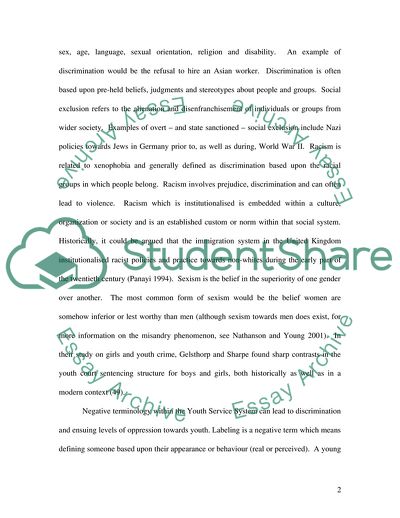Cite this document
(Discrimination, Oppression and the Youth Justice System Coursework, n.d.)
Discrimination, Oppression and the Youth Justice System Coursework. https://studentshare.org/social-science/1715182-why-do-you-think-it-is-important-to-take-oppression-seriously-within-the-youth-justice-system
Discrimination, Oppression and the Youth Justice System Coursework. https://studentshare.org/social-science/1715182-why-do-you-think-it-is-important-to-take-oppression-seriously-within-the-youth-justice-system
(Discrimination, Oppression and the Youth Justice System Coursework)
Discrimination, Oppression and the Youth Justice System Coursework. https://studentshare.org/social-science/1715182-why-do-you-think-it-is-important-to-take-oppression-seriously-within-the-youth-justice-system.
Discrimination, Oppression and the Youth Justice System Coursework. https://studentshare.org/social-science/1715182-why-do-you-think-it-is-important-to-take-oppression-seriously-within-the-youth-justice-system.
“Discrimination, Oppression and the Youth Justice System Coursework”. https://studentshare.org/social-science/1715182-why-do-you-think-it-is-important-to-take-oppression-seriously-within-the-youth-justice-system.


